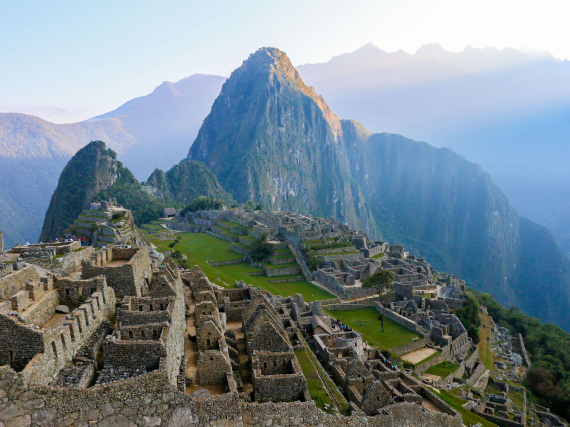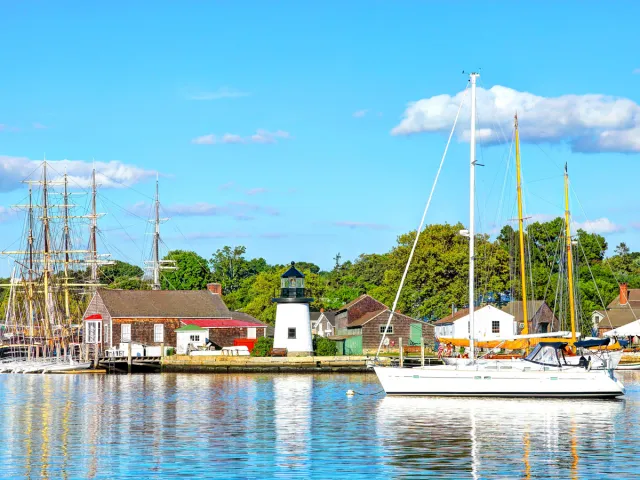For all the joys that summer can bring, the weather can be blisteringly unpleasant at times, especially when there’s excess humidity and triple-digit temperatures. Thankfully, if you’re looking for a reprieve from the sweltering heat, there are some states where you’ll find more temperate climates. To help those who prefer cool weather find their ideal summer getaway spot, we’ve ranked the top 10 coolest states in summertime, according to 2024 climate data from the National Centers for Environmental Information.
10. Minnesota

Average statewide temperature: 67.1 degrees Fahrenheit
Given its northern location, it should come as no surprise to learn that Minnesota is the 10th-coolest state in summertime. Most of Minnesota sits above the 45th parallel, meaning more of the state is closer to the frigid North Pole than to the warmer climate of the equator.
While it’s true that Minnesota generally experiences mild summers, 2024 was a particularly notable one: Average summer temperatures in the “Land of 10,000 Lakes” measured just over 67 degrees in 2024, marking the state’s coolest summer in the last seven years and the coolest summer in the Twin Cities of Minneapolis and St. Paul for the last nine years. These lower temperatures were due, in part, to the fact that large portions of the state experienced up to two times more rainfall than normal in 2024.
9. Vermont
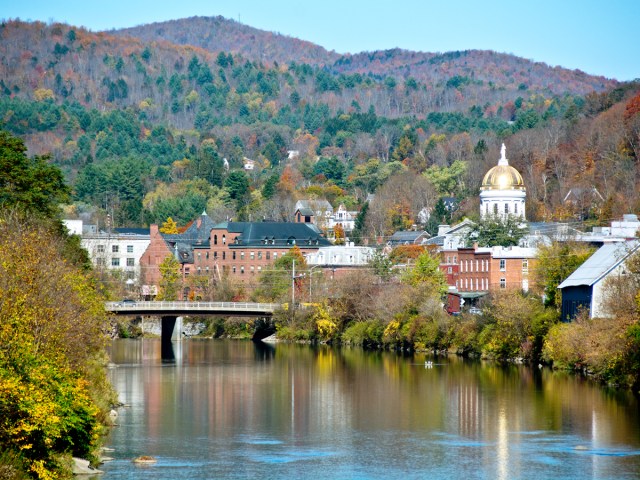
Average temperature: 67 degrees Fahrenheit
Even though 2024 was Vermont’s second-hottest summer on record — trailing only 2005’s average of 67.4 degrees — it’s still the ninth-coolest state in the nation during summer, on average. Summer temperatures are largely similar throughout the state, though more variation is experienced in the southern part of Vermont than in the north.
Even on the days that exceed 90 degrees, summer temperatures regularly drop into the 60s at night, thus bringing down the state’s overall average considerably. Vermont has experienced triple-digit temperatures only on rare occasions; the hottest temperature ever recorded in the state was 105 degrees in the town of Vernon on July 4, 1911.
8. North Dakota
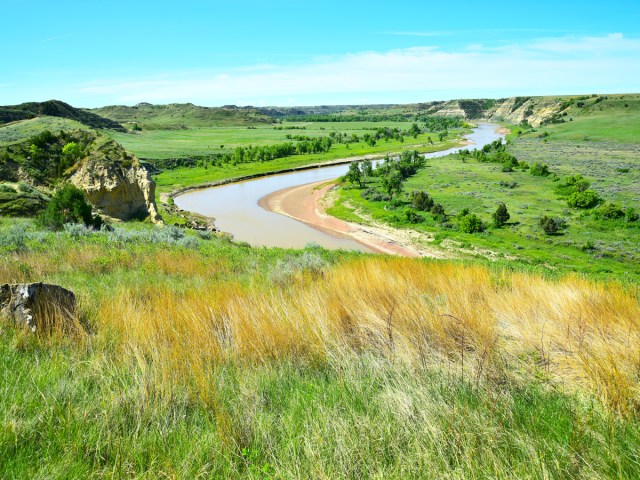
Average temperature: 66.7 degrees Fahrenheit
North Dakota’s summer temperatures have continued to drop for the last four years, after peaking at 70.7 degrees in the summer of 2021. It’s generally more humid in the eastern part of the state, specifically around the Red River Valley. This leads to greater levels of precipitation the farther east you go, which contributes to lower temperatures in that part of the state.
High winds also help keep temperatures lower in the northeastern region of North Dakota. This is especially true compared to the southern and western parts of the state, which tend to have higher temperatures. For example, during the warmest month of July, temps average 67 degrees in northern North Dakota, which is six degrees lower than in southern North Dakota.
7. Maine

Average temperature: 66.4 degrees Fahrenheit
Though summertime temperatures in Maine continue to rise each year, it remains the seventh-coolest state in the nation. This is due to both the state’s northern geographic location, as well as its position along the Atlantic coastline, which is cooled by marine winds.
Temperatures along the coast of Maine reach average highs in the 80s during summer, compared with further inland, where average temperatures reach into the 90s. Average temperatures in Portland, Maine’s largest city, can bottom out at a much brisker 53 degrees at night, so pack accordingly if you plan to visit.
6. Oregon
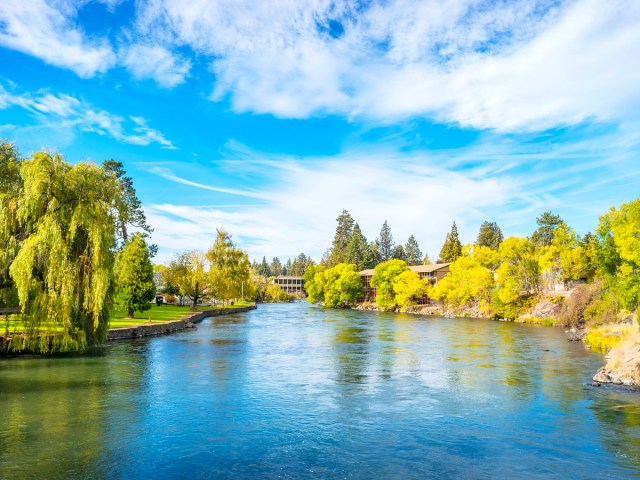
Average temperature: 65.8 degrees Fahrenheit
Oregon’s average summertime temperature measured a comfortable 65.8 degrees in 2024 — warmer than the state’s record low average summer temperature of 58.3 degrees in 1993 but still relatively mild. Of course, the terrain in Oregon is vast and varied, so temperatures also vary across the state. Eastern Oregon is known for its semi-arid continental climate, resulting in hotter temperatures, while western Oregon has a more temperate climate, due to the greater amounts of rainfall and higher overall elevation.
For example, in the central Oregon town of Bend, temperatures range from a low of 46 degrees at night to a daytime high of 81 degrees. Moving over to La Grande in the east, highs increase slightly to 82 degrees, though temperatures dip as low as 42 degrees. But if you go west toward Portland, you’ll find lows around 57 degrees and highs around 80 on average.
5. Idaho
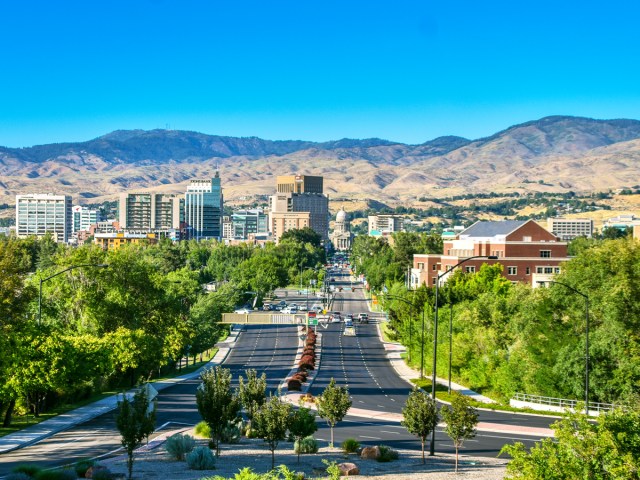
Average temperature: 65.1 degrees Fahrenheit
With a statewide average that barely eclipses 65 degrees, Idaho is America’s fifth-coolest state in summertime. In the northern part of Idaho, the weather tends to be milder but more humid. The hot season generally lasts from mid-June to mid-September, with average daily highs above 75 degrees but rarely exceeding 95 degrees.
Southern Idaho summers, on the other hand, tend to be dry and warm. Average July temperatures in southern Idaho range from 56.3 degrees to 88.6 degrees. Temperatures in the capital city of Boise can peak in the low 90s in late July, but otherwise, daytime highs tend to sit between 77 degrees and 86 degrees.
4. Wyoming
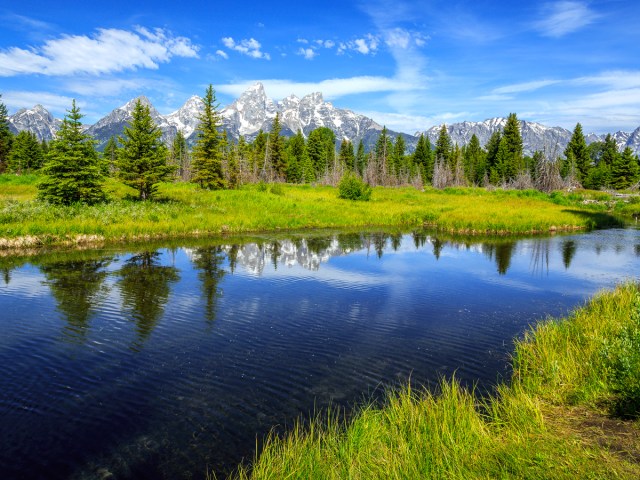
Average temperature: 64.8 degrees Fahrenheit
Wyoming’s pleasant summer temperatures are mostly thanks to the state’s mean elevation of 6,700 feet. Even the lowest point in the state sits at an elevation of 3,125 feet along the Belle Fourche River near South Dakota. These high elevations typically prevent temps in Wyoming from jumping into triple digits.
The average maximum temperature in July ranges between 85 degrees and 95 degrees throughout most of the state. However, nighttime temperatures in the high valleys and mountainous regions can dip below freezing, even in the summer. This is known to happen in Yellowstone National Park, where summer temperatures typically hover between 70 and 80 degrees during the day, but can drop below 32 degrees at certain higher elevations.
3. Montana
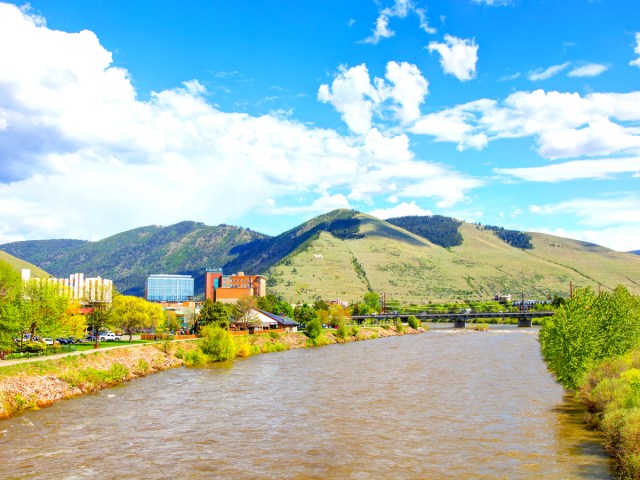
Average temperature: 64.7 degrees Fahrenheit
Big Sky Country is the third-coolest place to be in the U.S. during summer. While the state is still prone to the occasional heat wave, temperatures in the triple digits are rare. Average highs during the day tend to cap out in the 80s, and sometimes the 90s, but Montana’s mean temperature is still just 58 degrees in June, 67 degrees in July, and 65 degrees in August.
Summer days in Montana are generally dry and sunny, though the state is prone to a unique weather phenomenon called a dry thunderstorm. These storms don’t actually produce any rain — which makes sense given that Montana is generally more dry than humid — but the storms still produce lightning, which can be hazardous due to the dryness and an increased risk of wildfires.
2. Washington
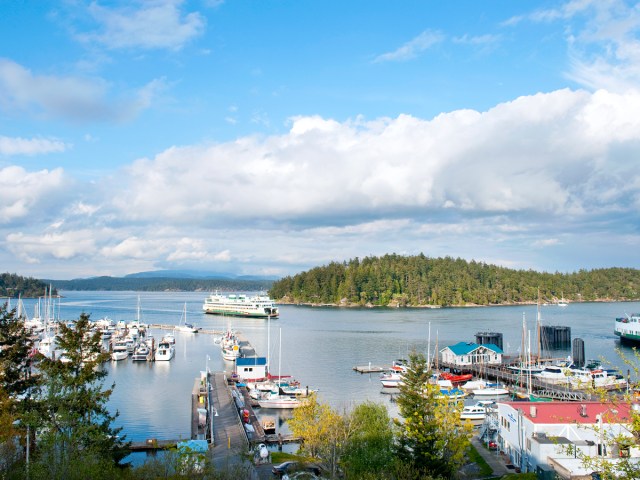
Average temperature: 64.4 degrees Fahrenheit
Washington is the coolest state in the Lower 48. The Evergreen State’s northern location helps keep things temperate, as do the breezes coming off the Pacific Ocean. Eastern Washington is usually hotter in summer (and colder in winter) than out west, because the western portion of the state is kept cool by a moderating effect coming off the Puget Sound and Pacific Ocean.
During late summer, fog tends to roll through many parts of the state in the early morning. This is especially true throughout the lower valleys in western Washington, as well as around the San Juan Islands northwest of Seattle. These foggy skies may obscure direct sunlight, which keeps temperatures at relatively low levels across the state, especially when compared to the rest of the country.
1. Alaska
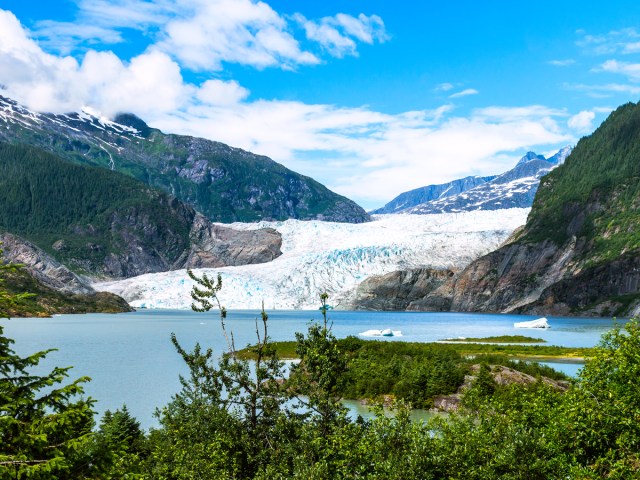
Average temperature: 51.7 degrees Fahrenheit
America’s northernmost state is also the country’s coolest during summertime. In 2024, the average summer temperature in Alaska measured just 51.7 degrees. This is only 1.2 degrees higher than the statewide average between 1925 and 2000, suggesting that Alaska has been impacted less by increasing temperatures than many other states on this list. These low temperatures are due to Alaska’s northern latitude, its high average elevations, and its proximity to the cool breezes that come off the Pacific Ocean.
Despite being the coolest state in the U.S., you’ll still find a variety of summer temperatures across Alaska. Though rare, temperatures can reach as high as 90 degrees in Denali National Park. But in general, you should prepare for cooler weather than the rest of the country. Take, for example, the city of Anchorage, where summer averages range from just 50 to 70 degrees. In the capital of Juneau, summertime highs generally peak in the low-to-mid 60s, making it a lovely destination for those who prefer getaways to cooler climes.
About the data: To compile this list, we analyzed climate data from the National Centers for Environmental Information from June to August 2024 to determine the top 10 coolest states in summertime. We ranked the states based on the NCEI’s data for statewide average daily temperatures, which are calculated by averaging the minimum and maximum temperatures for the day. You can view the full reporting here.
More from our network
Daily Passport is part of Inbox Studio, which publishes content that uplifts, informs, and inspires.

